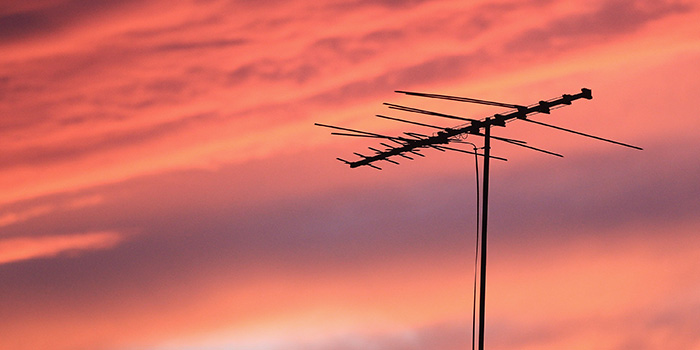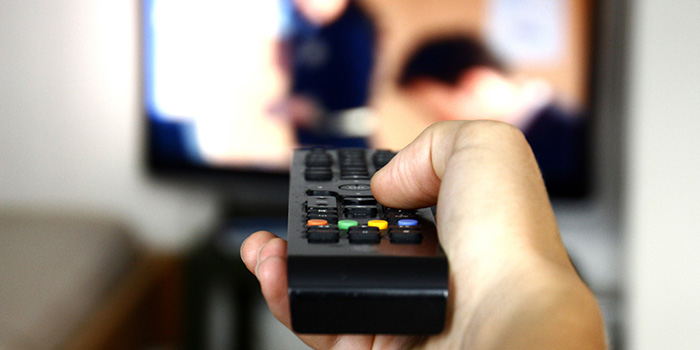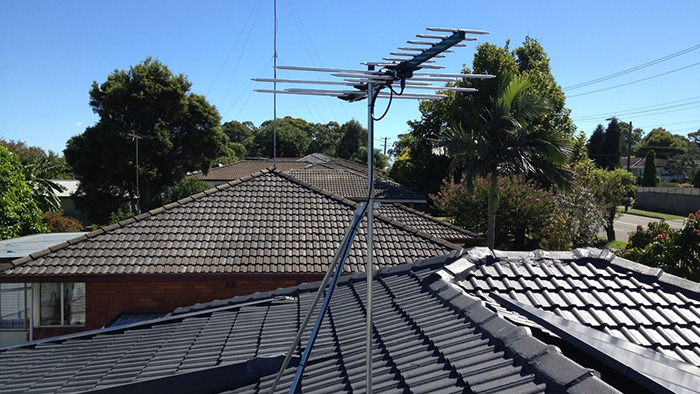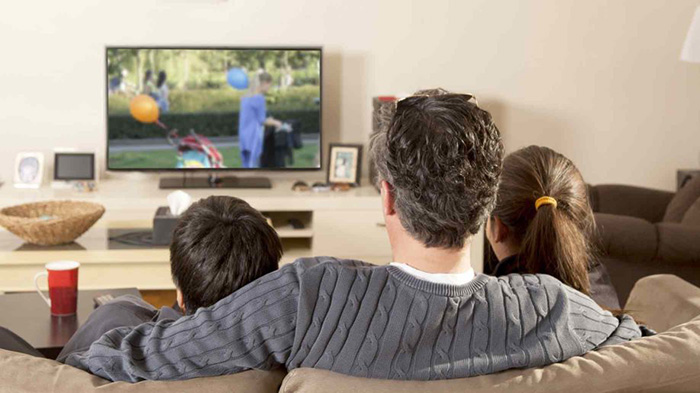
Cord-Cutting Antenna: The Essentials of Cable-Free TV
The time has come to cut the cord, and a free-to-air or cord-cutting antenna may be one of the most important pieces of equipment you'll need. Over the last few years, more streaming services have been coming into play. They offer a wide variety of content options that more people are becoming persuaded to cut the cord and do away with their cable and satellite providers.
It’s clear that viewers are searching for new ways to get their favorite content at a lower cost. That could explain why services like Netflix, Hulu, and Sling TV beat cable companies in the war for subscribers for the first time this year.
There is one cord-cutting method that many people often overlook. It has the potential to lower your monthly entertainment bills to virtually nothing, especially when it comes to Live TV. That magic method is the use of a free-to-air antenna. If you want to watch live television without paying any monthly or annual fees, this might be the best option for you.
Why Should You Pick a Cord-Cutting Antenna?
Remember those TV antennas from the old days? Well, they still exist and have gone digital. A free-to-air TV antenna, otherwise known as a cord-cutting antenna, lets you watch local TV stations without paying a dime to cable providers. We’ve already talked about cord-cutting using online services. Well, this is another way of getting more content to watch while at zero cost.
These antennas work the same way as an old-fashioned TV set. But instead of the ancient rabbit ears, they are designed to receive high-quality digital signals. And after doing so, they decode the signals and transmit them through to your TV set.
Free-to-air antennas offer you a convenient way to plug into live content. They are easy to set up and use. Want to know why a cord-cutting antenna is essential to any TV entertainment setup? Just read on.
A Cord-cutting Antenna Is Free To Use
With a free-to-air antenna, the channels you receive will depend primarily on your location. But it will also depend on the strength of the signals that are available in the area. Getting major networks might be a challenge, but there are quite some interesting options available. In many regions, you will be able to access Fox, NBC, ABC, PBS, and much more.
That said, a good antenna will permit you to access many of your favorite shows for free. The only costs associated with this method is buying the antenna. Once that is done, there are no additional fees attached to the service; none whatsoever!
The Antenna Provides Unlimited Access To Local News
You can get most of your favorite shows from service providers like Netflix and Hulu. But that alone wouldn’t convince many cord cutters to get a free-to-air antenna. Most of the major streaming options will not provide access to local news channels, but a cord-cutting antenna will. A free-to-air antenna actually gives you the easiest – and for many, the only way to watch local channels. That includes the local affiliates of major news channels as well as other local news networks and channels.
Services like Hulu and DirecTV don’t provide access to all the local channels that are available in all areas and they’ll still cost you up to $40 every month. So, if you like staying up-to-date with current events, a cord-cutting antenna is your best bet.
Antennas Allow You To Watch Live Sports
One factor that prevents a lot of people from cutting the cord is sports. As awesome as streaming services are, most of them don’t let you view your favorite sports content. And even if they do, you usually have to pay for a specific sports package. The most popular offering for this comes from Sling TV at a relatively low price point. But wouldn’t it be better to get this completely free?
A free-to-air antenna lets you watch all the teams that you support. It makes available major networks with some sports content available at no extra cost. In general, you can access sports content on AFC and Fox throughout the country.
Something to note, however, the cord-cutting antenna will not get you all the sports channels you probably need. It misses out on popular content from ESPN and major league networks. Depending on your favorite sports, a free-to-air antenna will satisfy your craving for sports content while helping you save lots of money.
Finding Local Channels And Their Signal Strength
There are many websites out there that can help you find out which TV channels are available with your free-to-air antenna in your location. One of the most reliable options is the signal locator tool on TV Fool.
When you click on “Find Local Channels”, it gives you a detailed list of the channels that are available in your area. It also shows you the signal strength for each channel based on your location. And, that's not all! The tool gives you a directional view of where the strongest signals are coming from. This ensures that you now know the best place to set up your antenna to get the strongest signal. This is very important if you are very far away from broadcast signals since you will need to pay more attention to antenna placement.
Choosing The Right Free-To-Air Antenna
Choosing the best free-to-air antenna for you will mostly depend on the information you have on the available networks in your area. That’s because each type of antenna has different range capabilities. Your choice will depend on how far you are from broadcast signals and the signal strength in your area. That said, here is a brief rundown of each type of cord-cutting antenna. This should help you make the right choice always.
Indoor vs. Outdoor
If the broadcast signals are relatively strong in your area, then an indoor free-to-air antenna might be the best choice for you. It’s important to note that many of the cheaper antennas are not weatherproof. This means that they can only be placed indoors.
You should also know that if you live in a place where broadcast signals are weak or farther away, an indoor antenna will not cut it. Instead, it might be a better idea to go for an outdoor option. They are built to take the brunt of most natural conditions.
They also have a much wider reach. In any case, an outdoor cord-cutting antenna is usually the more reliable option. But they do take more work to set up.
Directional vs. Multi-Directional
Another thing to consider is whether you want a directional or multi-directional free-to-air antenna.
Also known as uni-directional antennas, the directional option can only grab broadcast signals coming from one direction. On the other hand, multi or omnidirectional antennas can receive signals from many directions at a time.
Many people prefer multi-directional antennas because they are more convenient. However, they do have some significant disadvantages. They have a range that’s much weaker than directional antennas. This means that they tend to put all their power in drawing signals for different directions. They are also prone to noise and interference from multiple directions.
A directional cord-cutting antenna usually blocks all these out. However, directional antennas are the best option only if all the channels you want are coming from one point. Otherwise, they won’t work very well for you.
UHF vs. VHF
All TV broadcast signals are usually transmitted in one of two frequencies: VHF or UHF. So, it’s important to make sure that any free-to-air antenna you buy can support one of these. It’s ideal to get an antenna that supports both frequencies.
You don’t need to know the nitty-gritty of every channel’s frequencies, but it’s a good idea to note which frequency most of your favorite channels originate from.
Don’t Forget The Pre-Amplifier!
Other than your cord-cutting antenna, you may also need a pre-amplifier. This is a small gadget that you connect with your antenna’s cable before it connects to your TV set. Its main purpose is to boost signal strength in areas where it might be low.
It also counteracts the loss that usually happens in the coaxial cable between your free-to-air antenna and TV set. If the cable from your antenna is going to be longer than 50 feet, then you’ll need a pre-amplifier. The best option is to perhaps buy a free-to-air antenna that already has a built-in pre-amplifier. This is the case with most outdoor antennas.
Hooking Up Your TV Set To The Free-To-Air Antenna
The most important part of any free-to-air setup is the antenna itself. It doesn’t really matter how many channels are available in your area or if you watch them all. A cord-cutting antenna is a pretty cheap investment. You just need to pay a one-time cost to buy the equipment. That turns out to be a more affordable cord-cutting option than paying a monthly subscription fee.
Installing the Antenna
Once you have the right free-to-air antenna for your area, it’s time to set it up.
Start off by positioning the antenna in an optimal location. Ideally, this is where the antenna will have the best line-of-sight with broadcast signal towers in your area.
If you end up using an indoor antenna, you could mount it by the window to get the best signal. Avoid mounting anything on the walls until you’re happy with the signal that you’re receiving. This will save you from making a pretty expensive mistake. Instead, try moving the antenna around to improve your signal.
Outdoor antennas will need a bit more work to install. You’ll have to find a sturdy ladder and climb up to the roof or side of your house. The good news is that these antennas usually come with all the hardware you’ll need for installation. But if you’re scared of heights, it might be a good idea to call a professional.
Plug It All In
Once your cord-cutting antenna is installed, use the coaxial cable to connect it to your TV set. Do this by simply attaching the cable to the antenna input jack to your TV set. And if you end up using a pre-amplifier, make sure to plug it into a nearby power source. Some antennas can be powered via USB. If that’s the case, just connect it to the right port on your TV.
Programming the Channels
Once everything is plugged in, go to the channel setup menu on your TV. You’ll need to perform a scan to find all the available channels in your area. This process should take a few minutes. And if you’re not getting the best signal, just adjust the positioning and try scanning again. Once it’s done, you’ll be able to watch hundreds of high-definition TV channels for free. This will hopefully allow you to cut the cord for good.
Final Thoughts
Cord-cutting involves viewers using a wide range of services and devices to get their entertainment fix. The simplest method available to you is a free-to-air or cord-cutting antenna. Not only is it incredibly cheap, it is convenient and easy to use. After the initial setup, all you have to do is sit and watch all your favorite TV channels and shows.
A free-to-air antenna is a great investment for any cord-cutting setup. While online services are great, the antenna lets you keep accessing local channel, news, sports, and live content for free. It might not replace other methods, but a cord-cutting antenna is a great way to fill in the gap that’s often not available on other services.
Cord cutting can require viewers to use a variety of services, options, and devices. One of the most simple and familiar options is an HD OTA Antenna. While this option is already very common in several cor-cutting setups in America, many people are still skeptical getting to it. If you are one of such people, it is probably time to brave the odds and take the bold decision to try an HD antenna. Of course, it will cost you a few dollars, but it may just be the perfect addition you need to make your cord-cutting experience forever memorable.














